By Becky Butler
Despite being a transplant, Sylvia Sexton’s life in Alaska proved her to be an industrious, creative, and adventurous woman who embodied the Alaskan pioneer spirit.
Sylvia is commonly recognized by Seward historians as one of Seward’s founders. The Anchorage Daily Times described her as “one of the most popular young business women of Seward” (1923) and “one of the most prominent photographers of Alaska” (1939). Sylvia wasn’t originally from Seward, however, or even Alaska. She was born in Topeka, Kansas in 1885 to George and Claudia Sexton. Despite being a transplant, Sylvia’s life in Alaska proved her to be an industrious, creative, and adventurous woman who embodied the Alaskan pioneer spirit.
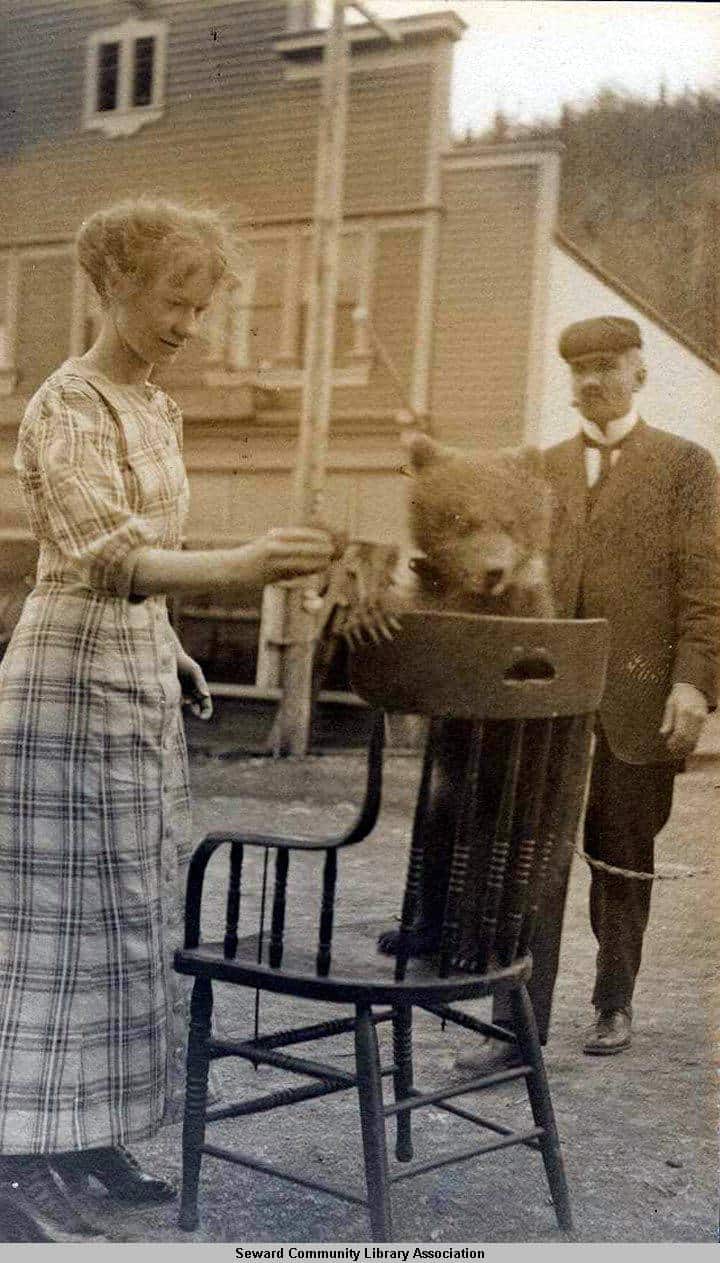
Sylvia Sexton with her father George Sexton, trying to feed a bear cub. Sexton Collection, Seward Community Library Association 1-530
Sylvia first came to Alaska in 1898 where her parents ran a lodging house in Skagway. In an interview with Audrey Loftus (a Fairbanks history enthusiast), Sylvia recalled her father assisting in the capture of the infamous gold rush gangster Soapy Smith. Perhaps this capture helped lend George judicial credibility, because in 1903, Judge James Wickersham appointed him U.S. Deputy Marshall in the gold rush town of Sunrise. Sylvia, who had moved to Seattle for school with her mother and brother, returned and worked her first job in Alaska as a recorder in her father’s office. George and his fellows traveled by dog sled to Seward for trials as it was the closest courthouse. As people moved away from Sunrise towards more profitable gold fields, however, the journey became less and less reasonable. On May 13, 1904, the Sextons moved to Seward.

Sylvia Sexton with Bear Cub on a leash Sexton Collection, Seward Community Library Association 1-529
Then 19, Sylvia kept busy in her new home by becoming the first mail clerk in Seward under the first postmistress, Lillie Gordon. George moved out of the judicial system and became manager of the Coleman House in 1907. He bought it and renamed it the Sexton Hotel in 1913. He also bought Sylvia her first Kodak. Her creative spirit piqued, Sylvia threw herself into her new hobby/occupation. Gordon, the Methodist minister L.M. Pedersen, and the mail clerk aboard the Dora, John Thwaite, taught Sylvia how to create a dark room and develop film. Eventually, Sylvia and Thwaite opened up a curio, confectionery, and photography shop in the Sexton Hotel. After two years, Thwaite sold his share and Sylvia became the sole proprietor of “Sylvia’s Place” in 1919. Sylvia remembered serving President Warren G. Harding ice cream that he fed to the Sextons’ pet bear cubs during his 1923 visit. The hotel and Sylvia’s Place burned down in 1935. Even after losing everything, Sylvia moved across the street and reopened her store in the present location of the Seabean Cafe. She sold her store in 1951. In 1959, Sylvia moved to Washington to live in the Odd Fellows Home. She died in 1969.
Known contemporarily for her creativity (Alaska Nellie Lawing wrote in her autobiography that Sexton used her renowned talents with silk flowers to create Lawing’s wedding bouquet), the evidence of Sylvia’s character remains today in her photography. Her images depict everyday Seward life, Sylvia’s friends and family, and the Alaskan adventures she enjoyed. She canoed, climbed mountains, and even backpacked to rivers to fish. She was an active member of the Pioneers of Alaska, the Independent Order of Odd Fellows, the American Legion Auxiliary, and the Seward Republican Club. Her documentation of her community was a gift not only to her contemporaries, but also to the future — historians today use her images to understand life in early Seward.
A large collection of Sylvia’s photography is available on Alaska’s Digital Archives and through the Seward Community Library Association; even years after her death, the life and loves of Sylvia shine on in her work. Sylvia was a photographer, business owner, and pioneer. Perhaps above all else, she was a remarkable woman whose memories of the land and people she loved are preserved as her
enduring legacy to Alaska.
Below is a selection of Sylvia’s photos all courtesy of the Sexton Collection from the Seward Community Library Association:
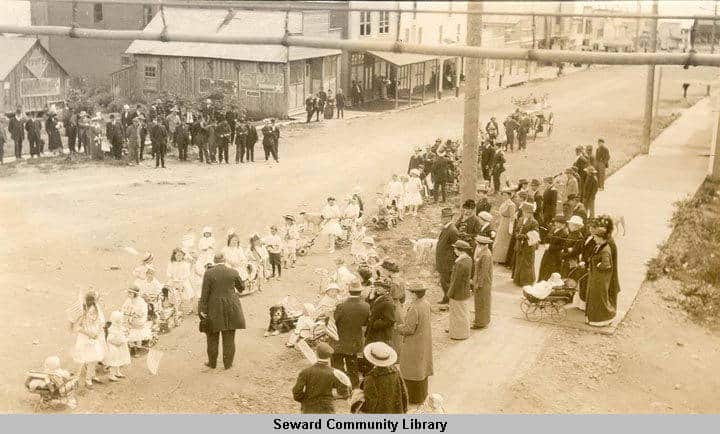
Children line up on 4th Avenue after Fourth of July parade in Seward, Alaska to be judged. Circa 1910-15. 1-672

Two little girls wait to be in the 4th of July parade in Seward, Alaska. Circa 1910-15. 1-666
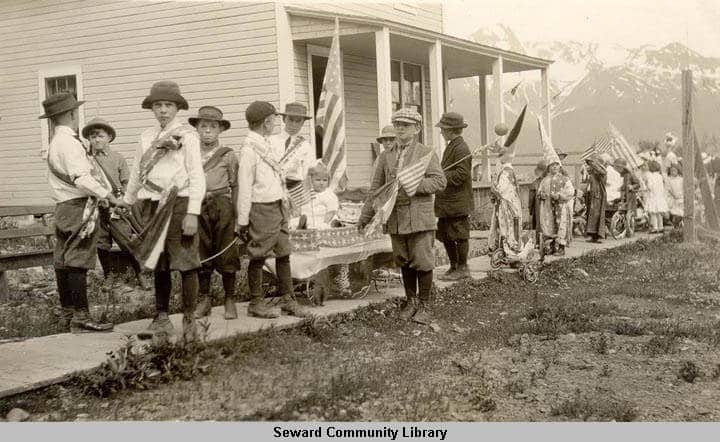
Waiting for the 4th of July parade to start in Seward, AK. Mt. Alice is visible in the background. Circa 1910-15. 1-674
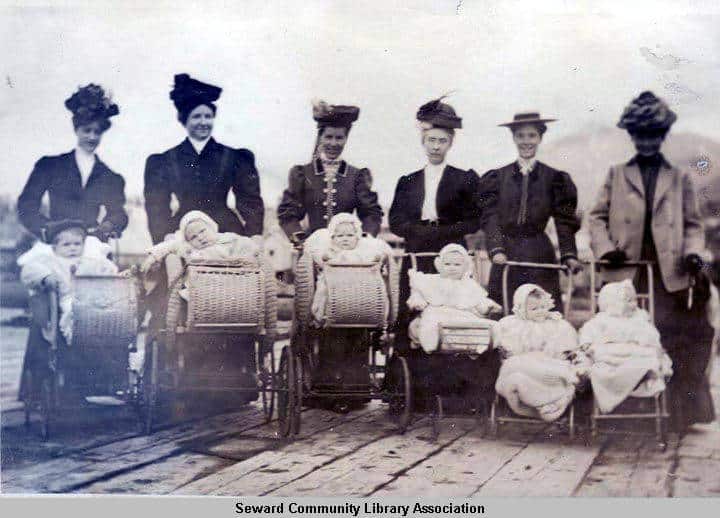
Six women and their babies pose in Seward, AK in 1910. 1-429
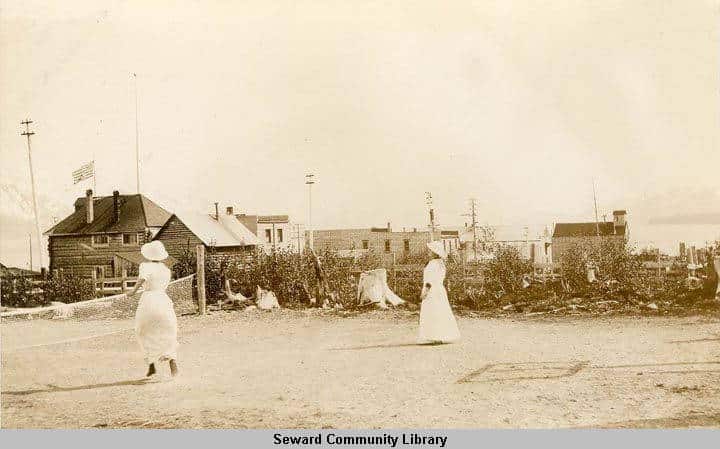
Women playing tennis in Seward, Alaska. 1911-1914. 1-637
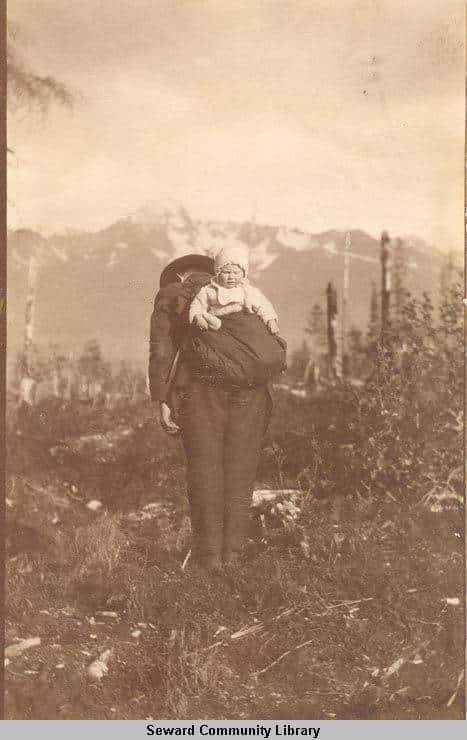
A man carries a baby on his back in Seward, AK. 1-1262
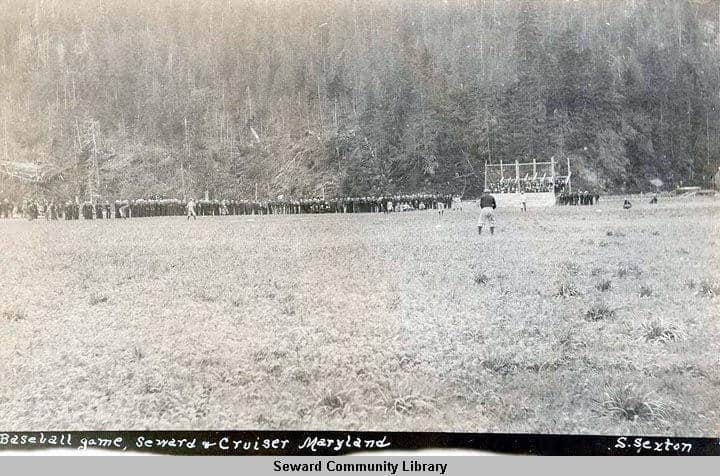
Large crowd watches a baseball game with crew members of the U.S.C. Maryland playing against locals in Seward, Alaska. 1913. 1-645
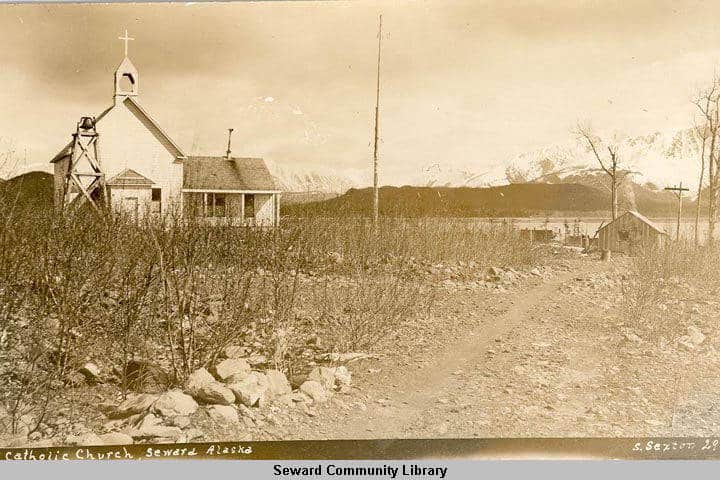
The Sacred Heart Catholic Church which stands on what is now 5th Avenue in Seward, Alaska. The building was completed in 1910. 1-620
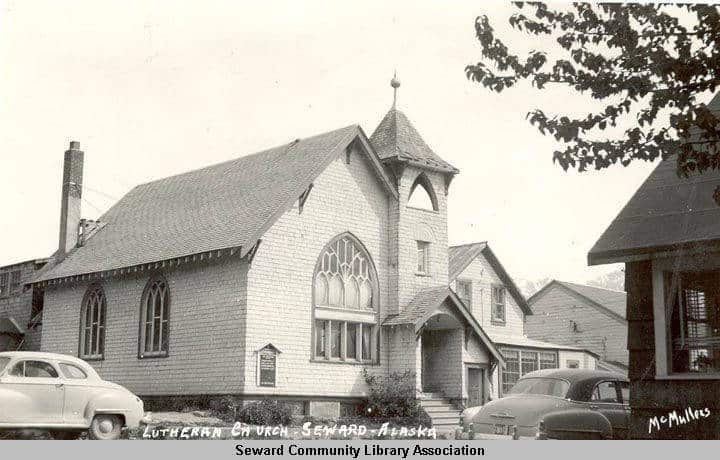
View of the Lutheran Church, which is now Resurrect Art Coffee Shop in Seward, Alaska, with cars parked on the street. 1949-1959.
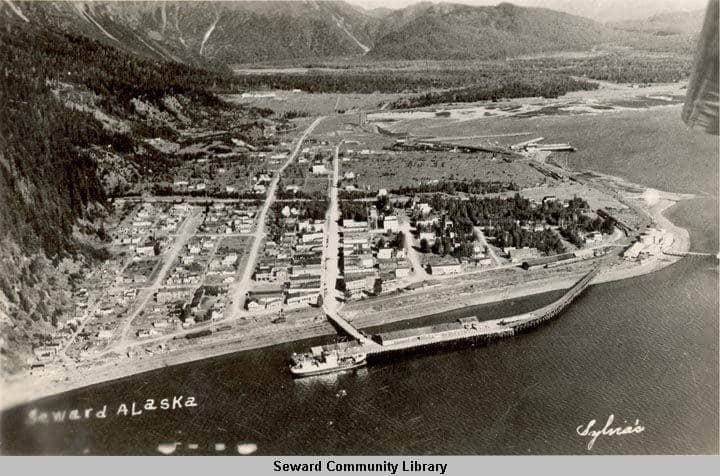
Aerial view of Seward, Alaska as seen from an airplane. Ship docked at railroad dock (center). Circa 1940s 1-1427
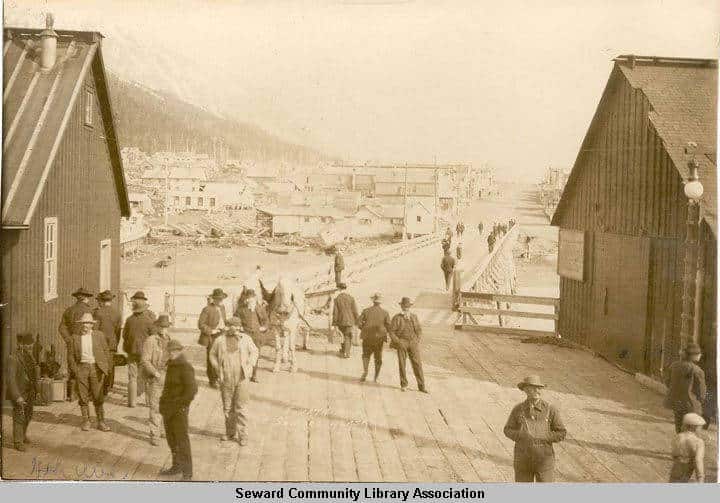
Northward view of Seward, Alaska taken from the 4th Avenue dock. Circa 1906. 1-131
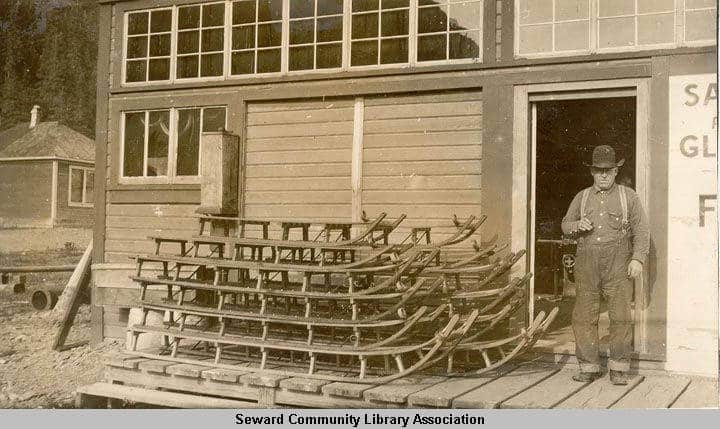
A storekeeper stands on the front porch of his business and poses with his stock of sleds in Seward, Alaska. 1912-1915? 1-525
Enjoy these articles? Sign up for our monthly newsletter to be sure to see more of them or follow us on Facebook or Instagram. Sign up below!
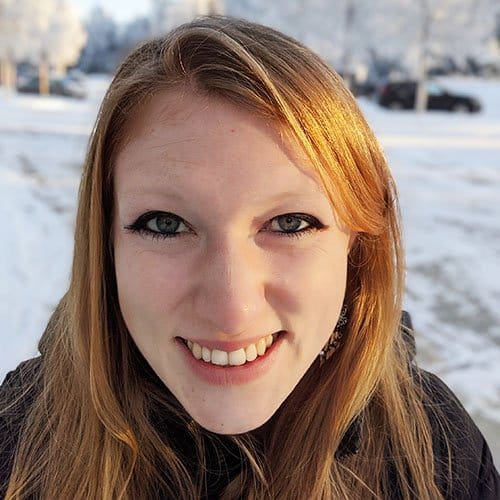 Becky Butler is a librarian, archivist, and researcher from Anchorage. She earned her Master’s in Library and Information Science from Simmons University in Boston. She enjoys exploring the papers of Alaska’s early residents and connecting their experiences to the state she sees today.
Becky Butler is a librarian, archivist, and researcher from Anchorage. She earned her Master’s in Library and Information Science from Simmons University in Boston. She enjoys exploring the papers of Alaska’s early residents and connecting their experiences to the state she sees today.
